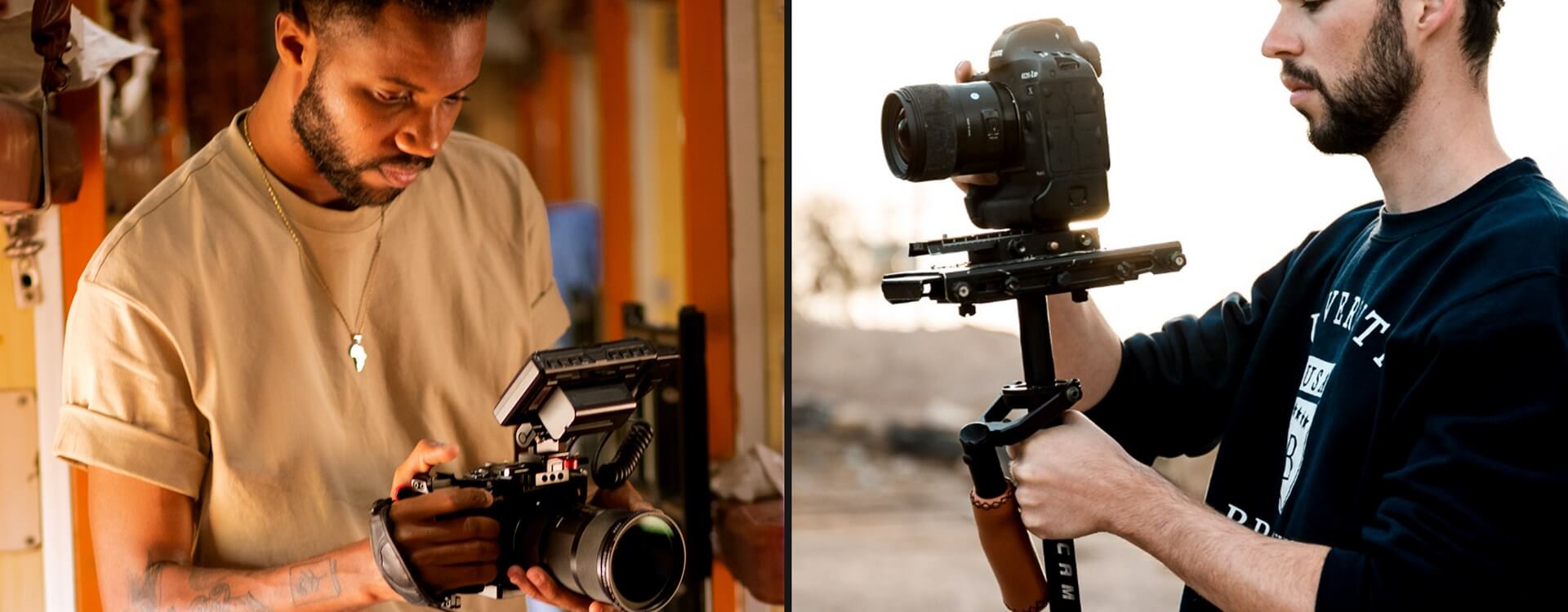Highlights
Table of Contents
Explore article topics
The mirrorless vs. DSLR debate has raged on for many years, twisting and turning from one to the other, never failing to confuse first-time buyers. At one point, the argument was fairly clear: If you were a professional photographer or you were aiming for this career path, you needed the best image quality. Therefore, you got a DSLR, no questions asked. Meanwhile, if you were an average consumer (a bit more concerned with things like weight and portability than dazzling imagery), you were more likely to choose a mirrorless camera.
Some theorized that mirrorless cameras would usher in the death of the DSLR. While it’s true that plenty of very expensive mirrorless cameras now sit at the high end, directly challenging the DSLR market, the demise of DSLRs is nowhere in sight. They continue to hold their own, with some dropping down to meet the compact form factor and beginner-friendly price points of mirrorless systems.
So, which one is right for you? The truth is, both are great options for several different reasons. We’ll dive into both so that you can decide, once and for all, which one you should be using. This is the definitive Artlist guide to mirrorless vs. DSLR.
And when you figure out which type of camera type is right for you, go over to our recommendations for the best mirrorless cameras for 2021 and the best DSLR cameras for 2021.
What is a DSLR camera?
DSLR stands for ‘Digital Single-Lens Reflex.’ DSLRs use the same design as the 35mm film cameras from the past: Once light has passed through the lens, it hits a mirror angled at 45 degrees. The light bounces straight up into a viewfinder. When you hold your eye to this, you’re seeing exactly what the lens is seeing at that moment. There’s no digital processing in between.
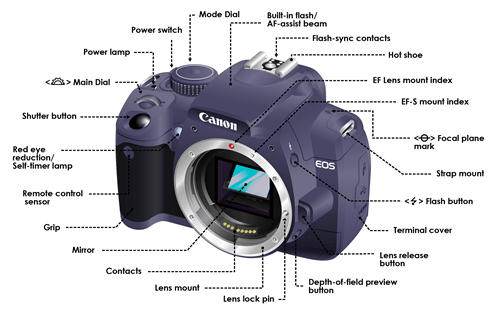
Diagram by Guru Camera
So, that satisfying ‘ker-chunk’ noise every time you click the shutter? That’s the angled mirror swinging out of the way, revealing the image sensor behind it. The light hits the sensor, and voilà–you have your image.
What is a mirrorless camera?
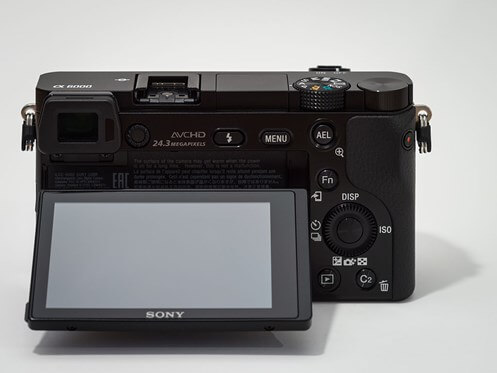
Image by JürgenMatern
As for ‘mirrorless,’ the clue is in the name. Unlike DSLRs, mirrorless cameras don’t use mirrors. Instead, light travels through the lens and hits the sensor straight on. The sensor processes the image, and almost simultaneously, it’s displayed either on the monitor on the back of the camera or on an electronic viewfinder (EVF). So, when you push the shutter button, the camera is recording what’s on the sensor at that precise moment.
Price
As discussed above, there was a point when price really did make a difference between the two systems. This is no longer the case.
What determines price these days is not the type of camera you’re buying – it’s the feature set. Broadly speaking, you’ll be getting the same features, performance and power on a pro DSLR and mirrorless cameras, and likewise on consumer and hobbyist models. So, the price difference has mostly disappeared.
If you’re comparing the cheapest DSLRs, you’ll find that they may not have 4K video capabilities or a touch screen. While the most affordable mirrorless systems will have this, they will typically lack a viewfinder. And so on. You’ll have to weigh the following aspects to really make an informed decision.
Size & weight
As a general rule of thumb, DSLRs are larger than mirrorless cameras, thanks to the angled 45-degree mirror discussed earlier. The DSLR body has to fit in this mirror and prism. Don’t take this as a negative, by the way. Having a larger camera can actually help when you’re shooting with a large telephoto lens–or if you just happen to have big hands!
On the other hand, mirrorless cameras have a much smaller body because there’s no mirror inside. They’re often much more compact and lightweight, making them great for carrying around and traveling with. Interestingly, though, some mirrorless models are beginning to buck this trend. As the hunger for a full-frame sensor increases, mirrorless-camera lenses have become much larger and heavier while the body has remained relatively small. Mirrorless manufacturers have been listening and responding to direct feedback from professional photographers who have asked for the larger grips and better ergonomics often found in DSLR systems.
If you’re really interested in keeping size and weight down, the Micro 4/3 mirrorless systems found in Olympus and Panasonic models are the way to go.
Autofocus

In general, DSLRs have always held the upper hand over mirrorless systems when it comes to autofocus (AF). They use a feature called ‘phase detection’ to determine if an object is front- or back-focused, enabling them to achieve superior focus on very fast-moving subjects. This makes DLSRs the best option for sports and wildlife photography. However, in other areas, things are changing.
The catch with DSLRs and their phase-detection systems is that they only work while the mirror is down. If you’re using a DSLR in live-view mode (especially with video work), the mirror has to be flipped up, and the phase detection sensor no longer has access to the path of light streaming through. In these circumstances, the cameras end up switching to a much slower contrast-detection AF system, which uses an image captured by the sensor.
‘That sounds a lot like how a mirrorless camera works,’ we hear you say. Indeed, it is, as entry-level models may struggle with this slower, dated autofocus system. However, many higher-end mirrorless cameras are now utilizing a hybrid system of both contrast-detect and phase-detection autofocus. These perform much better and find focus a lot quicker. Meanwhile, to keep pace with mirrorless performance in live-view mode, many newer DSLR models are utilizing phase-detection pixels built directly into the sensor.
All of this has ensured that there’s now very little distinction between mirrorless and DSLR autofocus.
Viewfinders
With viewfinders, clear differences persist. With the light passing through a DSLR lens and hitting the angled mirror, the image displayed on the optical viewfinders is very clear, natural-looking, and lag-free. Many photographers consider this a critical feature. If you’re shooting in low light or other challenging situations, it’s generally accepted that the DSLR’s optical viewfinder will perform a lot better than a mirrorless camera, making the DSLR easier to shoot with.
With a mirrorless system, you’re seeing an image displayed on a monitor or an electronic viewfinder (EVF). This image is produced by the sensor processing the light that’s hitting it directly. Occasionally, depending on the conditions, you’ll find that the EVF does lag or lacks in quality. Early EVFs were generally plagued by poor image quality, but in newer models, the technology has improved significantly. Some photographers now actually prefer to shoot with an EVF. Newer models guarantee a high-quality real-time view of the frame and show plenty of vital and useful information layered over on the display (particularly useful for video work).
Image quality
Given that both DSLR and mirrorless systems have the ability to use full-frame sensors (and plenty of the higher-end models do so), comparing image quality is very straightforward. There’s not really any intrinsic difference in image quality in mirrorless vs. DSLR. Both are exceptional!
Crop factor
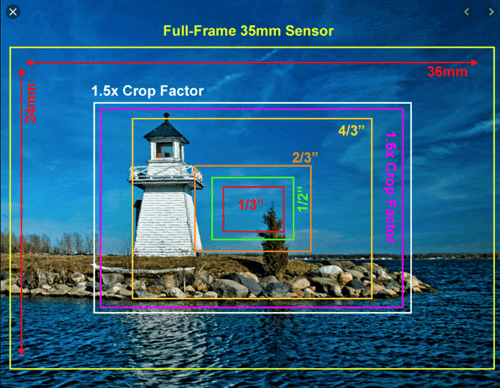
Where image quality is concerned, one thing to bear in mind with each system is the crop factor. A ‘crop sensor’ refers to any sensor that is smaller than a full-frame sensor (which is equivalent to that of a 35mm film frame). The most common types of crop sensors are the APS-C (a roughly 1.6x crop) and the micro 4/3 sensors (2.0x crop). Multiply the crop factor by the focal length to get the effectual focal length. For example, a 50 mm lens on a 1.6x crop factor is the equivalent of an 80 mm focal length. You have to take this math into consideration when selecting your camera lenses for a shoot.
A full-frame sensor generally provides a much broader dynamic range and often yields a higher quality image in low light situations and with high ISO performance. Of course, as discussed above, the smaller sensors in many mirrorless systems do allow for a reduction in size and weight, improving portability of the body (often affordability, too)
Nowadays, crop sensors have improved so much that there is far less quality difference between them and full-frame options. Furthermore, many mirrorless cameras are now utilizing full-frame sensors too.
Lens ecosystems
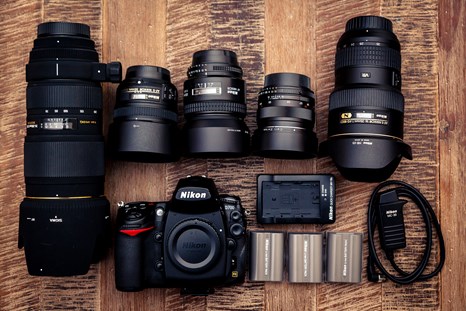
The key thing to consider when you’re looking to upgrade from shooting with your phone or a compact camera is that both DSLRs and mirrorless systems come with the ability to swap out lenses. This makes them much more versatile than smartphone cameras but also more of an investment. When you make your purchase, you’re not just buying the camera but access to a whole ecosystem of lenses.
Brands like Nikon and Canon have been around forever (it feels like it, anyway). As a result, they’ve had plenty of time to build out their lens families. You’ll find a huge range of lenses available for DSLRs–at least 2 or 3 that are suited for any job, when you take into account the offerings of 3rd-party manufacturers such as Tamron and Sigma.
On the other hand, mirrorless systems are playing catch-up here. Having only been around for the past decade, fewer lenses are available for mirrorless cameras. Still, the range options are growing all the time. Interestingly, with the right adapter, you can mount lots of DSLR lenses on your mirrorless body. But if you take this approach, you will find yourself sacrificing things such as focal lengths, zoom characteristics, speed or even autofocus availability.
Get unlimited royalty-free 4K footage
Video
Generally speaking, thanks to the autofocus systems discussed above, higher-end mirrorless cameras surpass DSLRs when it comes to video. Because the vast majority of DSLRs (with the notable exception of some recent releases) can’t use phase detection when the mirror is up and recording live video, their autofocus capabilities just aren’t that great. They’ll often leave you hunting for the right focus because the camera has switched to the slower contrast-detection AF system.
Furthermore, even mirrorless cameras at entry-level have started offering 4K/Ultra HD support. Both systems are now making 4K/Ultra HD the new standard for video capture, but DSLR models have been a little slower to adapt. It will be interesting to see how this progresses over the next few years.
Battery life

Image by Alexandra_Koch from Pixabay
DSLRs tend to perform much better in this area, the reason being that you can shoot with them just by using the optical viewfinder–no need for the LCD screen or EVF. Because a mirrorless camera is always having to power the EVF, and because their compact camera bodies often leave less room to store a robust battery, their batteries just don’t last as long. Both systems come with removable batteries, so you can always buy spares to ensure you never run out of juice.
Shooting speed
Both DSLR and mirrorless systems can shoot exceptionally fast. However, mirrorless systems definitely have an edge in this area, thanks, of course, to their lack of a mirror. On a DSLR, the mirror has to be lifted each and every time. At the same time, on the mirrorless, the simpler mechanics mean they can shoot more photos per second at higher shutter speeds. Some very high-end DSLRs can still hold their own with great burst speeds, but in general, mirrorless leads the way.
Verdict
So, mirrorless vs. DSLR. Which one is best for you? Ultimately, the choice depends on your shooting style, needs and the features that matter most to you. Using the information above and factoring it all into what type of work you’ll be doing should lead you to the answer you’re searching for. Either way, it’s a tough choice. The number of camera options available is mind-boggling, but too much choice is a good problem to have. As filmmakers and photographers, we’ve never had it so good.
If you’re conscious of size and weight and looking to shoot more video, then clearly, mirrorless is the way forward. In many aspects, actually, mirrorless is looking to be the future. However, DSLRs do continue to hold their own.
If you’re a sports or wildlife photographer, the DSLR is still king. Many people still love them for their sturdy builds, fantastic ergonomics (nice, big, chunky hand grips) and better battery life.
It’ll be interesting to see where we are in another 5 years.
Now that you’ve made up your mind, check out our recommendations for the best mirrorless cameras for 2021 and the best DSLR cameras for 2021.
Josh Edwards is an accomplished filmmaker, industry writing veteran, storyteller based in Indonesia (by way of the UK), and industry writer in the Blade Ronner Media Writing Collective. He's passionate about travel and documents adventures and stories through his films.
Share this article
Did you find this article useful?
Related Posts
- By Jonathan Mateer
- 7 MIN READ
Latest Posts
- 25 Apr
- By Josh Edwards
- 4 MIN READ
